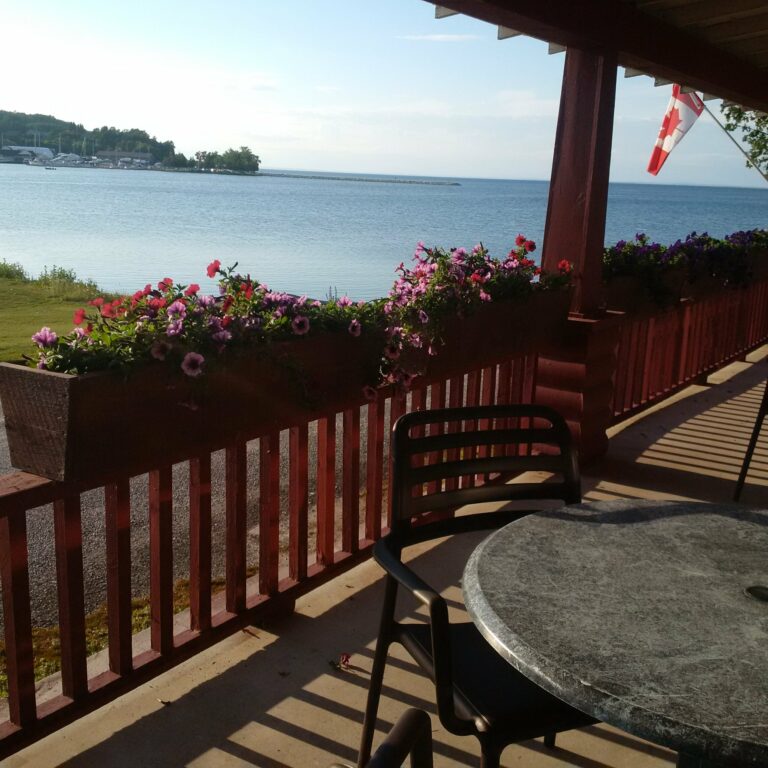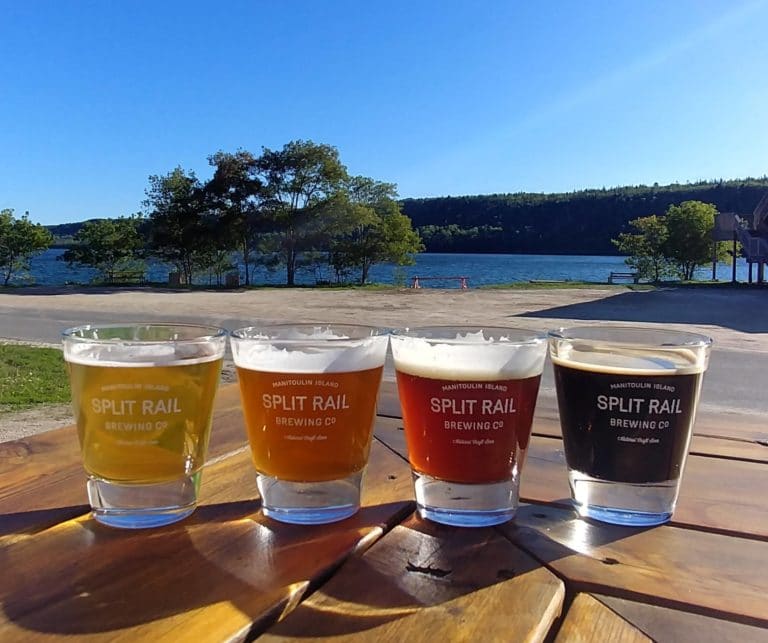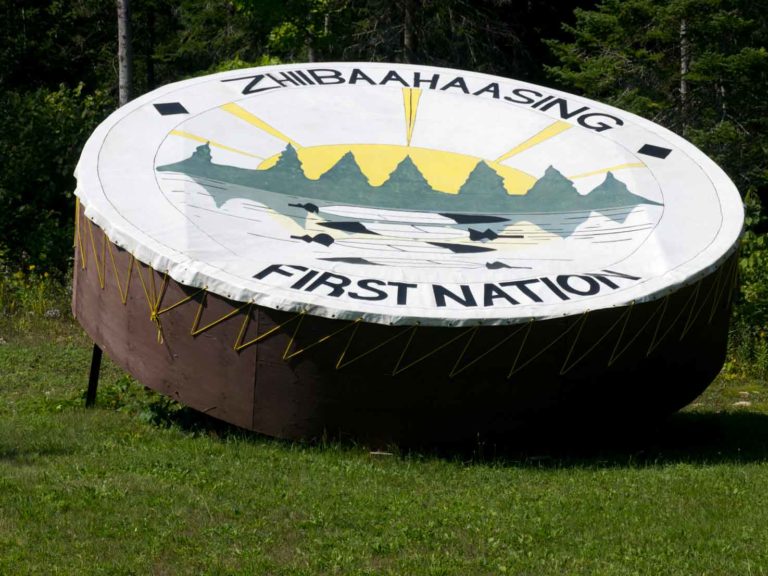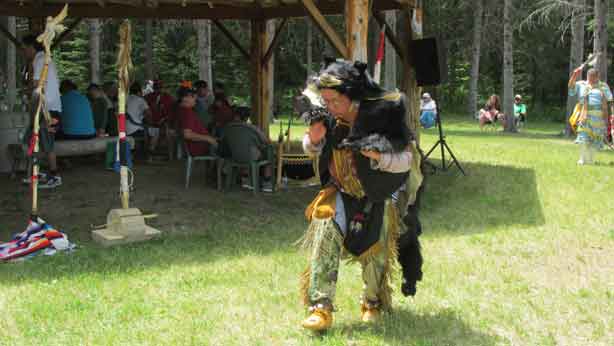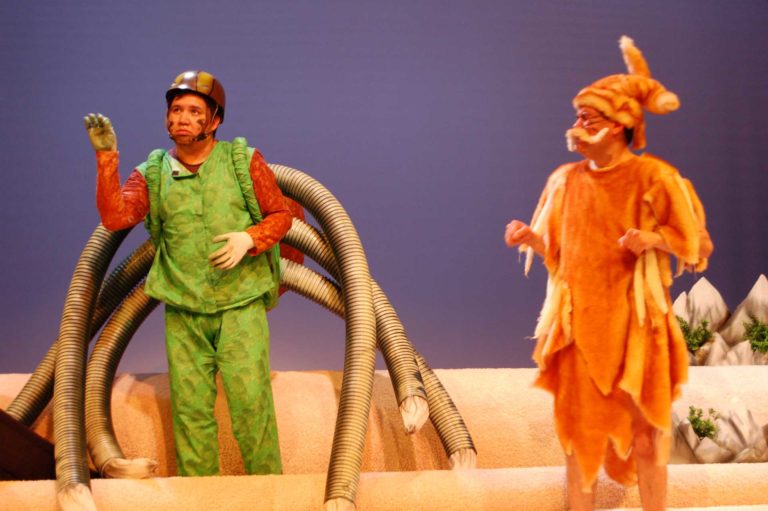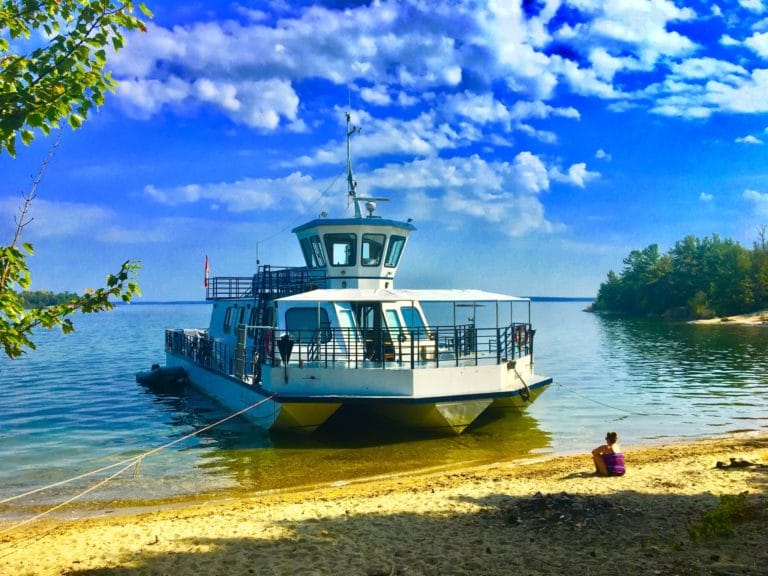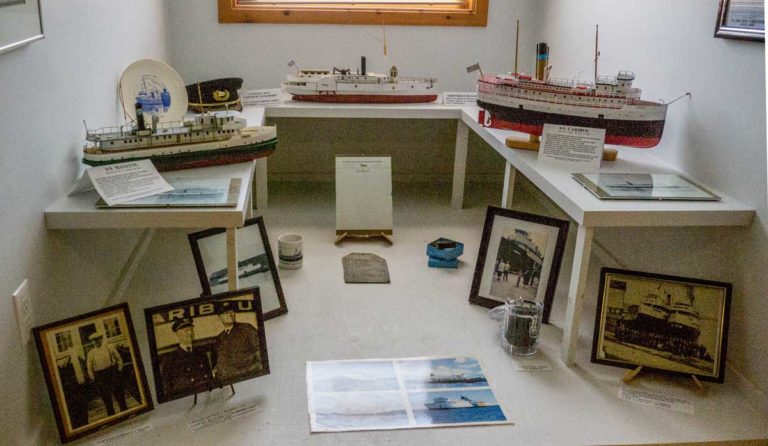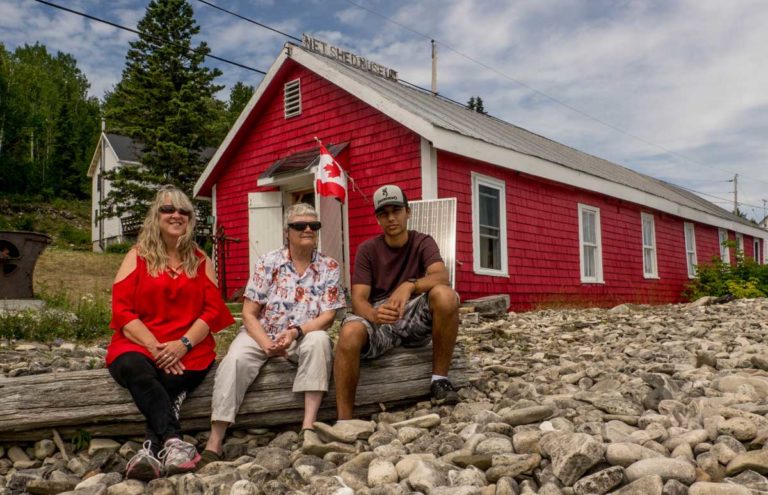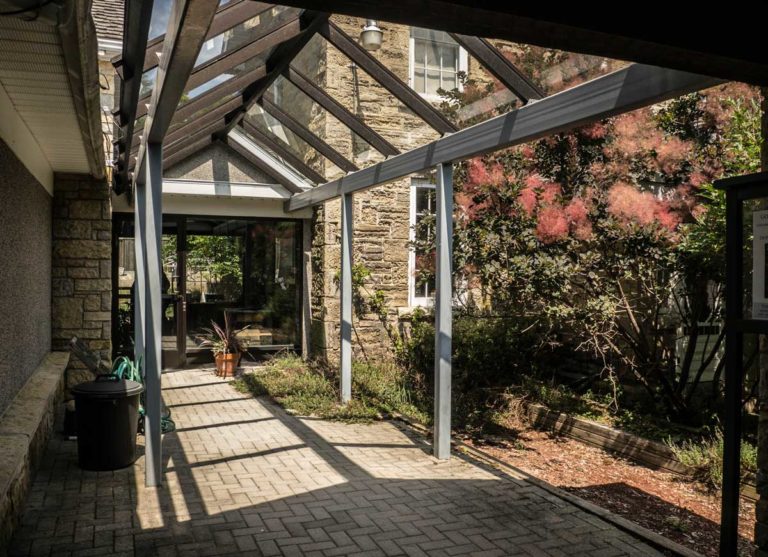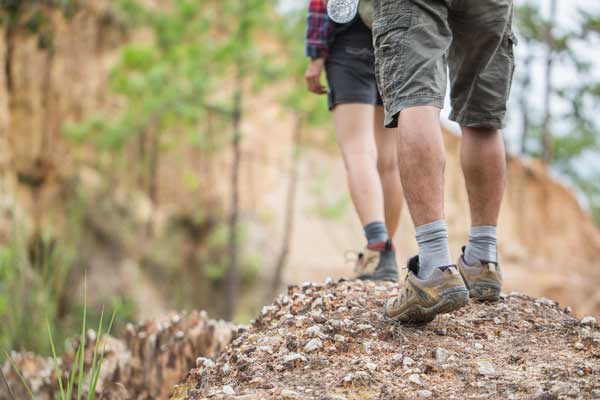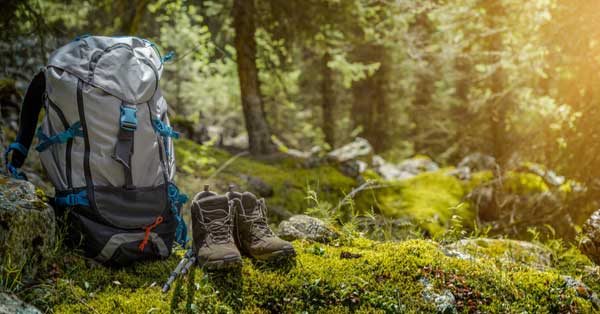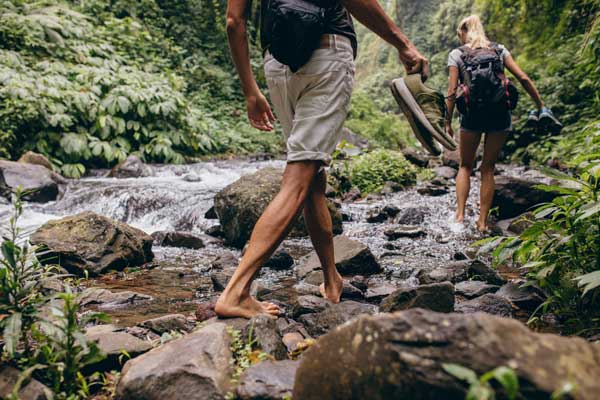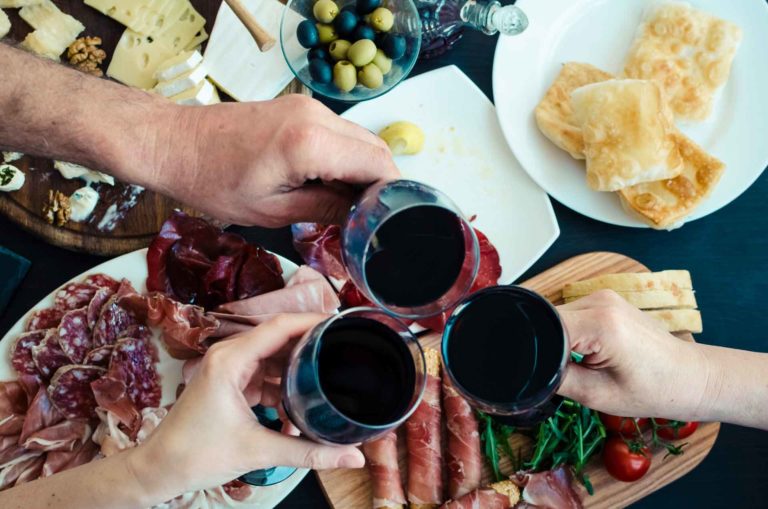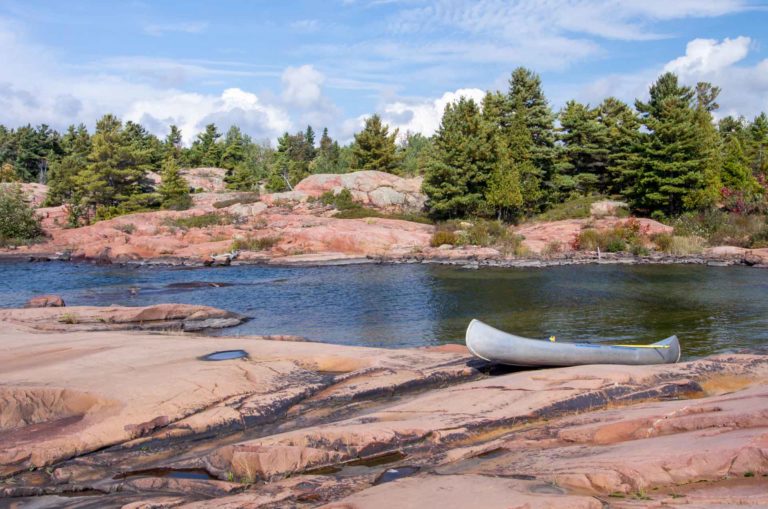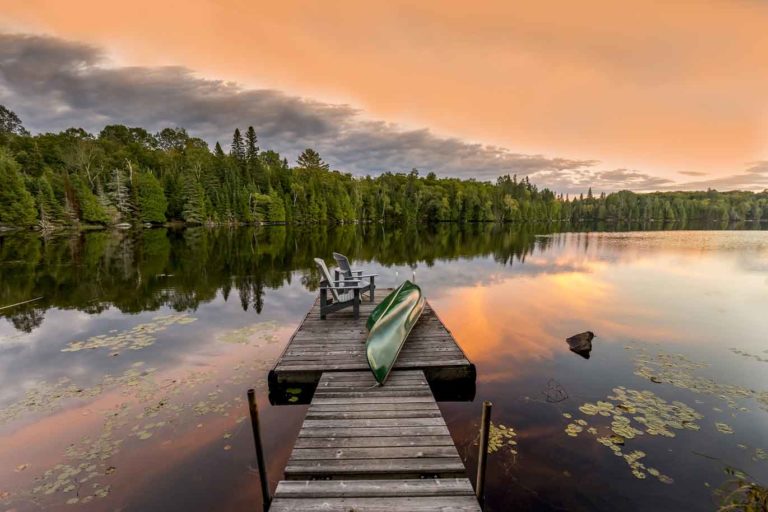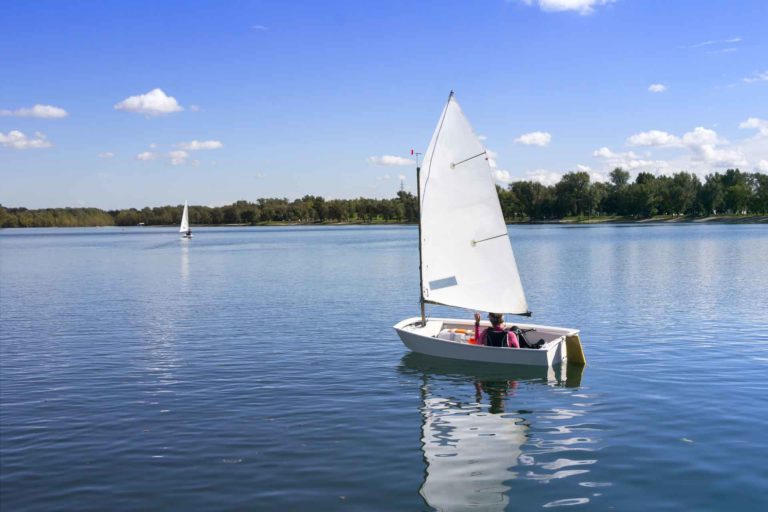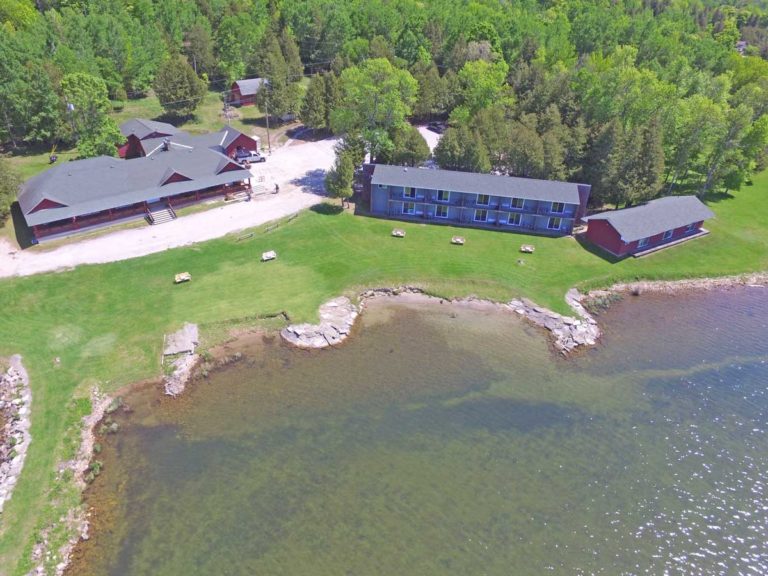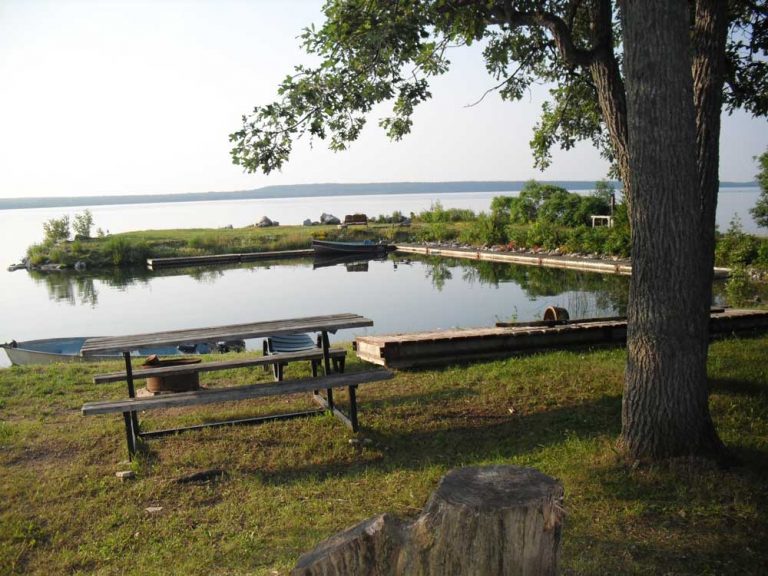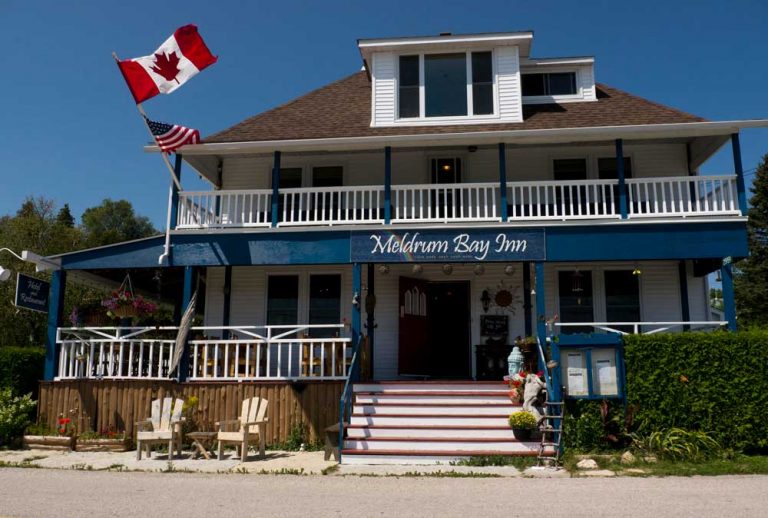Silver Lake
Keen fishermen may find:
- Perch
- Walleye
- Bass
Visitors enroute from Gore Bay to Meldrum Bay driving along Highway 540 west, when they reach the hamlet of Silver Water might be puzzled over the village’s curious absence of silver water.
The earliest settlers in this part of Manitoulin’s West End though, experienced no shortage of shiny H2O.
According to the late Arthur Edmonds, in his “Early History of Robertson Township,” the first community picnic was held, not in the village, but on the shores of nearby Silver Lake.
A secluded, sandy-bottomed and, yes, shimmering stretch of spring-fed water located a couple of miles west of Silver Water, Silver Lake is something of a well-kept secret, invisible from Highway 540 and its eponymous community.
But it was a logical place to mount the area’s first July 1 patriotic picnic.
The tradition, writes Mr. Edmonds, was begun way back in 1883 by Mr. Kemp, “a good public-spirited man” and the area’s first settler.
Activities of that inaugural 1883 picnic on Silver Lake included running races, caber tosses, and something described in Mr. Edmonds’ chronicle as “rowing rave.” The latter is almost surely a misspelling, though it’s tempting to picture staunch Victorians engaged in a “rave.”
There was also, at the first picnic, an activity involving a cannon ball, which had been found, writes Mr. Edmonds, in the “Indian clearing.”
A number of cannon balls, interestingly, are said to have been found on the West End of the Island. Jean H. Haines, in “An Historical Sketch of Manitoulin,” suggests they were during the War of 1812 to intimidate the area Natives, some of whom had fled to Manitoulin from the US.
Mr. Edmonds says the men at the picnic, including members of the nearby Sheshegwaning First Nation, took turns hoisting the cannonballs on their shoulders, presumably forming a type of shot-put.
You won’t see many antics involving cannonballs (or cabers) on the shores of Silver Lake these days, but the lake remains a scenic, inviting spot. Indeed, it is easily one of the most alluring lakes in the Island.
At roughly 2 ½ miles long by 1 ½ mile wide, it is a smallish lake, but big enough that sail boats occasionally tack across its surface. The eastern shore is scalloped with sand beaches, and because of the lake’s overall shallowness, you can actually walk across the north end, ensuring pleasant temperatures for swimming.
A string of cottages, many of them rustic log buildings, owned by people from as far away as Ohio and even Florida, cling to the east shore as well, but public access is provided at a boat launch in the south end of the lake and in a number of other spots along its circumference. The west shore is largely uninhabited, and the cottagers all seem low-key types, so the lake doesn’t feel overrun. It feels almost paradisaically peaceful.
And the water is amazingly clear. Bruce Duncanson, who lives on the east shore of the lake and has deep roots in the area, as his great-grandparents John and Catherine Duncanson homesteaded on the north shore of the lake in 1882, says the clarity is a combination of the lake being spring-fed, and having relatively little human impact.
“When we were out west at Lake Louise, you couldn’t see your fingers underwater,” he notes, “but here, you can always see your feet.” He believes the name “Silver Lake” originated with the area’s first peoples, who “said that when they saw the sun shinning off it, it looked silvery.”
Mr. Duncanson’s wife, Irene, points out that “there is another Silver Lake that you see off Highway 69 when you’re driving south to Parry Sound, but it’s not very silver.” Mr. Duncanson laughingly agrees. “No. That one is black.”
The two built a retirement home on the lake after living for years on the Duncanson family spread, in a building that was originally the schoolhouse. Mr. Duncanson attended that school for a short spell, before it was closed in 1936.
There has been at least one fatality on Silver Lake. In 1998 three men were firing up the steam broiler at a sawmill on the lake when it exploded, blowing them out the building, says Mr. Duncanson. “A couple of the guys were badly scalded, and one of them, Frank Guinn, died from the injuries.
Few hazards exist now, with the exception of some “sink-holes” in the northern corner of the lake, and a sign on that shore line warns swimmers to avoid the area.
The ice in winter is quite thick, given the lake’s shallowness, so snowmobilers need not be too concerned about going through.
That said, Mr. Duncanson’s two sons, when they “were young pups,” managed to sink a sled in the mushy area near the outlet of Silver Creek. “I think it was Glen; he was the daredevil of the family,” the father recalls with a chuckle. “Fortunately, it was only two feet of water where they went in.”
Nearby places to stay, eat and play
Queen’s Inn
Watersedge Pub & Restaurant
Gore Bay Manitoulin Hotel
Split Rail Brewery
Zhiibaahaasing First Nation Traditional Powwow
Sheshegwaning First Nation Traditional Powwow
Theatre
Golf
Canadian Yacht Charters
North Channel Cruise Lines
Purvis Marine Museum
The Net Shed
Gore Bay Museum
Noble Nature Trail
Sheshegwaning – Nimkee’s Hiking Trail
Misery Bay
Gore Bay Boardwalk Trail
Codmothers
North Channel
Lake Wolsey
Ice Lake
The Inn at Gore Bay
Lake Wolsey Cabins
Meldrum Bay Inn
Another old timer recalls some ice antics of his own, from the time when he was a boy (and snowmobiles had yet to be invented.) “In 1934 the lake was glare all winter, no snow, and we would skate the whole length of the lake, right to the door of the schoolhouse.”
Summer was the best time to experience the lake, though. “We used to go our with a pole cut from the bush with a line on it, and we’d get a whole mess of big bass,” the old timer recalls. “Later, there was a lot of perch. So many that if you got a small one, you broke its neck and tossed it to the seagulls.
Fish still frequent Silver Lake, though not so many perch or bass as there once were. The main species now is pickerel, which were introduced a number of years ago.
And at least one sturgeon, according to Mr. Duncanson. “Joyce MacDonald was working at the cemetery one day”, (there is a cemetery on the eastern shore of Silver Lake, where many of Mr. Duncanson’s relatives rest,) and she saw this big old sturgeon swim by. Said it looked like a block of pulpwood, about four feet long. I guess it’s still in the lake.
If you would like to experience the warm, limpid waters of Silver Lake, and perhaps spy a wily old sturgeon as well, simply continue due west after reaching the community of Silver Water and keep to the right where the road forks south to Burnt Island.
Bring your bathing suit and sunglasses. And, for tradition’s sake, why not a picnic basket too?


